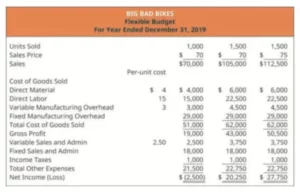Definition
Owner’s equity is the enterprise’s funds embodied in net assets, funds initially invested by its founders or participants, as well as its financial results accumulated (lost) in the course of its activity – profits and losses received (incurred) over the entire period of the enterprise’s existence.
Owner’s equity is the property of an enterprise, but since the enterprise itself is someone’s property (a private person, a group of persons, or the state), its capital is wholly owned by the owners (shareholders) of the enterprise. At the same time, the responsibility of an enterprise before creditors is shared by its owners, who risk their capital owned in the company.
Let’s consider what useful information the owner’s equity amount recorded in the Balance sheet can give to its users:
- The amount of equity is equal to the value of the enterprise for shareholders (investors).
- Owner’s equity is the remaining value amount of the assets that the owners can claim upon the closure (liquidation) of an organization.
- The Balance sheet equity amount determines the actual value of the share in the company when it is acquired by the company.
- Owner’s equity allows evaluating the risks and guarantees of the interests of creditors.
- Data on the amount of the owner’s equity is necessary for financial analysis of the organization’s activities and making management decisions of an operational and strategic nature.
Calculation
To calculate the owner’s equity, you would follow simple steps:
- Determine the beginning balance of the owner’s equity from the previous period’s Balance Sheet or Statement of Owner’s Equity;
- Add the income a business earned during the period or subtract any losses incurred or simply use Net Income amount;
- Add any contributions made by the owner’s/stockholders during the period;
- Subtract any drawings (dividends) made during the period.
This calculation method follows the owner’s equity financial statement structure. An easier and faster way to find this number is to calculate it using an accounting equation. As you might remember, it states that Assets equal Liabilities plus Owner’s Equity. If we solve for Owner’s Equity, we will get the following formula:
Positive and negative equity
The owner’s equity can be negative or positive. If the indicator is positive, it means that the company has more than sufficient asset value to cover its liabilities. If this indicator is negative, the company has debts that outweigh its assets.
In general, a company with negative equity is not considered a safe investment choice because either its total assets are too low or the total liabilities are too high. In any case, the company has more debt than its current assets can satisfy, exposing it to the risk of bankruptcy.

















